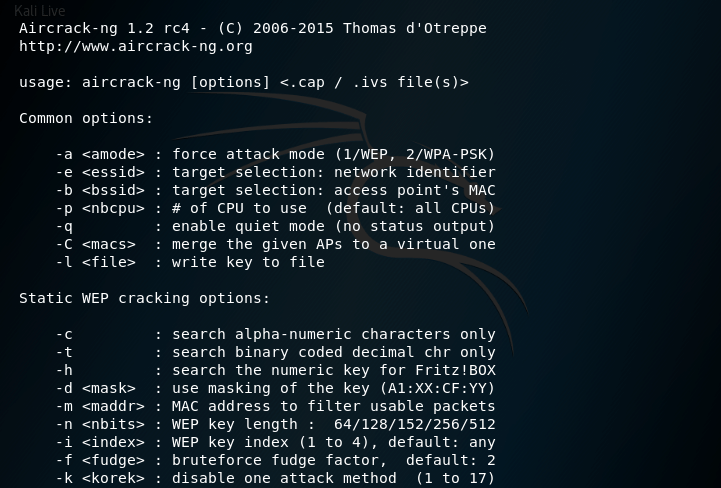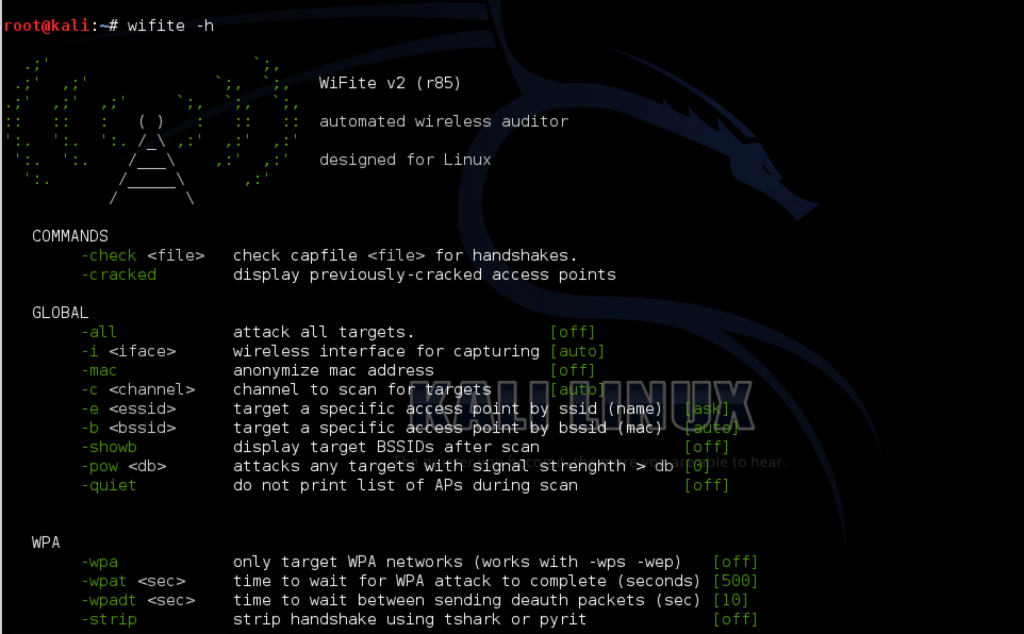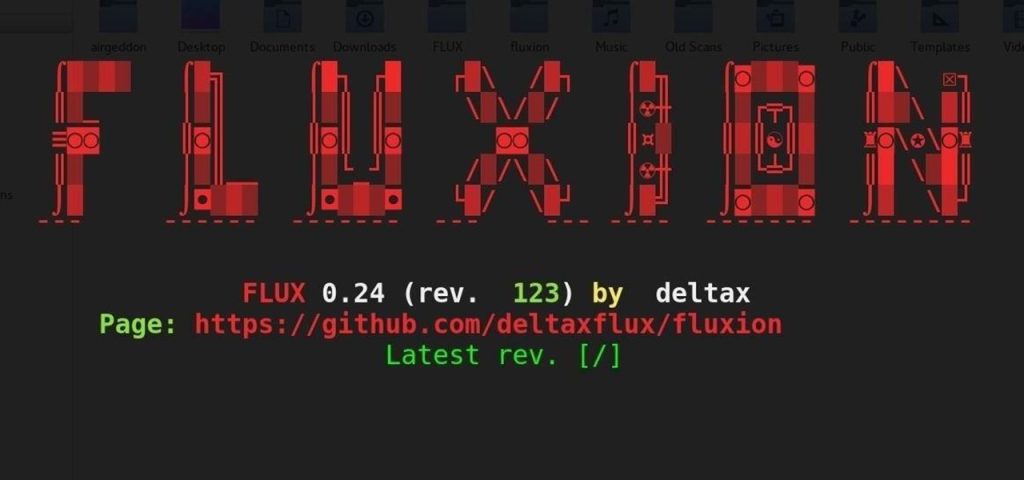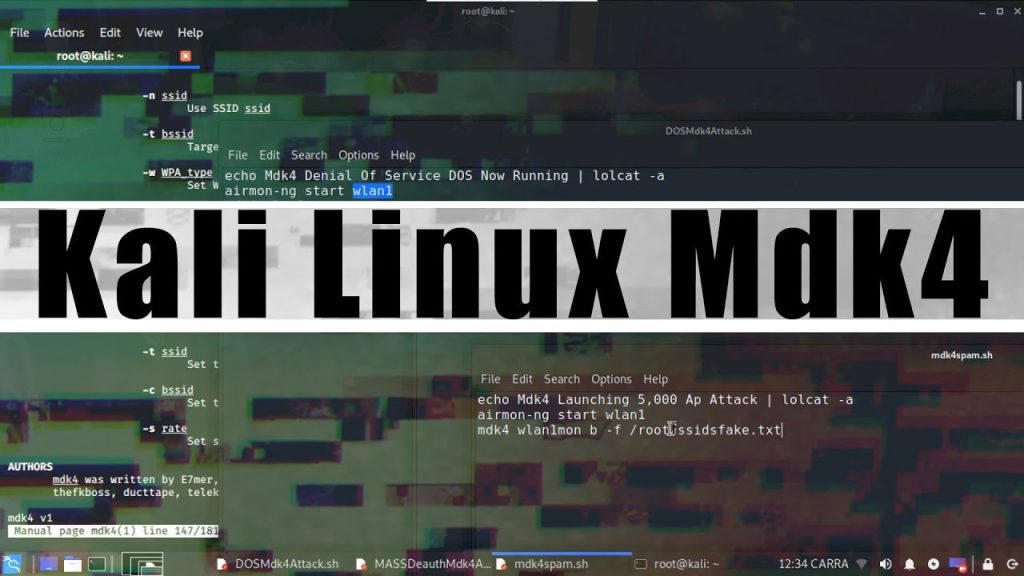Before delving into the expanse of the best wireless network pentesting tools, it’s crucial to lay down a robust legal and ethical foundation. Ensuring explicit written permission and adhering to regulations like GDPR and CFAA is paramount for a lawful and ethical approach.
A Deep Dive into Wireless Network Pentesting Tools
1. Aircrack-ng
Aircrack-ng stands as a versatile suite, offering essential tools for packet capturing, password cracking, and key analysis. This toolkit is indispensable for various scenarios, including the capture and analysis of WPA/WPA2 handshakes.
Sample Use Case: Capturing and Cracking WPA/WPA2 Handshakes
# Start packet capture on a specific interface
airmon-ng start wlan0
# Capture packets and save to a file
airodump-ng -w capture_file --output-format pcap mon0
# Crack WPA handshake using aircrack-ng
aircrack-ng -w wordlist.txt -b <BSSID> capture_file-01.capAircrack-ng is especially valuable when assessing the robustness of WPA/WPA2 encryption in a wireless network.

2. Wireshark – wireless network pentesting tool
Wireshark, a powerful protocol analyzer, extends its capabilities beyond wireless networks. It proves invaluable in scenarios requiring a detailed analysis of network traffic, making it an essential tool for pentesters.
Sample Use Case: Analyzing DHCP Traffic
# Filter DHCP traffic in Wireshark
wireshark -i wlan0 -Y 'dhcp'Wireshark aids in uncovering vulnerabilities within the network protocols, making it an indispensable tool for comprehensive assessments. Here are some more of the best wireless network pentesting tools:
3. Wifite – wireless network pentesting tool
Wifite streamlines wireless penetration testing by automating the capture of handshakes and launching attacks against encrypted networks. This tool is particularly useful when efficiency and automation are critical.
Sample Use Case: Automated WPA/WPA2 Handshake Capture
# Run Wifite with WPA handshake capture and brute-force attack
wifite --wpaWifite is a go-to choice for pentesters looking to save time and effort while ensuring thorough wireless network assessments.

4. Reaver
Reaver specializes in attacking WPS-enabled routers, providing a targeted approach to assess weaknesses in WiFi Protected Setup (WPS). This tool is employed in scenarios where routers with WPS functionality are in use.
Sample Use Case: Brute-Force Attack on WPS
# Run Reaver against a WPS-enabled router
reaver -i mon0 -b <BSSID>Reaver’s focus on WPS vulnerabilities adds a specialized dimension to the wireless penetration testing toolkit.
5. Fluxion
Fluxion adopts a social engineering approach, creating a fake access point to capture WPA/WPA2 handshakes. This tool is particularly useful when evaluating the susceptibility of networks to social engineering attacks.
Sample Use Case: Social Engineering-based WPA/WPA2 Handshake Capture
# Run Fluxion with a specified target
./fluxion -i wlan0 -c <target_BSSID>Fluxion’s deceptive strategy showcases the importance of considering social engineering aspects in wireless network security assessments.

6. Hashcat wireless network pentesting tool
Hashcat, a powerful password recovery tool, supports various hashing algorithms, making it instrumental in scenarios requiring extensive password cracking.
Sample Use Case: Brute-Force Attack with Hashcat
# Run Hashcat with a wordlist against captured hashes
hashcat -m 2500 -a 0 captured_hashes.txt wordlist.txtHashcat’s flexibility and speed make it a go-to tool for efficiently cracking hashed passwords.

7. Fern Wi-Fi Cracker
Fern Wi-Fi Cracker, with its user-friendly GUI, simplifies wireless penetration testing, making it accessible for less experienced users.
Sample Use Case: Automated WEP Cracking
# Launch Fern Wi-Fi Cracker and select WEP cracking
sudo fern-wifi-crackerFern Wi-Fi Cracker is particularly beneficial for scenarios where a graphical interface is preferred or when introducing penetration testing to a broader audience.

8. MDK4
MDK4 adds capabilities for Wi-Fi jamming and deauthentication attacks. This tool is essential in scenarios where assessing the resilience of a network against deauthentication attacks is a priority.
Sample Use Case: Deauthenticate Clients from a Target Network
# Deauthenticate clients from a target network
mdk4 wlan0 d -b <BSSID>MDK4’s role is crucial in understanding how a network responds to deauthentication attacks and identifying potential vulnerabilities.

Techniques and Insights
Understanding the techniques behind these tools is crucial for the best wireless network pentesting tools – testing. Why? Because once you understand how these all work, you can start to build your own! Which will ultimately be in python or GO.
. Aircrack-ng and Reaver focus on cryptographic attacks and WPS vulnerabilities, respectively. Wireshark provides insights into network traffic, while Wifite automates processes. Fluxion introduces social engineering tactics, Hashcat specializes in password recovery, and Fern Wi-Fi Cracker offers a user-friendly GUI. MDK4 adds the capability of deauthentication attacks.
Research and Industry Insights
To enhance the effectiveness of these tools, staying informed about the latest research and industry insights is crucial. Regularly refer to research papers on wireless security vulnerabilities, understand emerging threats, and adapt penetration testing strategies accordingly.
Practical Use Cases
Let’s delve into more practical use cases for these tools, exploring where and why they’d be used during wireless network penetration testing.
Aircrack-ng: Assessing WPA/WPA2 Encryption
Aircrack-ng excels in scenarios where the robustness of WPA/WPA2 encryption needs to be assessed. Its ability to capture and analyze handshakes makes it a valuable tool in identifying vulnerabilities in wireless networks relying on these encryption standards. Pentesters often use Aircrack-ng to evaluate the effectiveness of password policies and the strength of encryption keys.
Wireshark: Uncovering Network Anomalies
Wireshark is a fundamental tool for pentesters seeking to uncover network anomalies. Its versatile packet analysis capabilities make it invaluable when identifying potential security issues in network protocols. Pentesters may use Wireshark to scrutinize network traffic for signs of malicious activity, unauthorized access, or vulnerabilities that could be exploited by attackers.
Wifite: Time-Efficient Automated Testing
Wifite shines in scenarios where time-efficient automated testing is paramount. In large-scale penetration tests or time-sensitive assessments, Wifite’s automation capabilities streamline the process of capturing handshakes and launching attacks against encrypted networks. Pentesters leverage Wifite to maximize efficiency and cover a broader scope in a limited timeframe.
Reaver: Targeting WPS Vulnerabilities
Reaver becomes essential when targeting routers with WPS vulnerabilities. In scenarios where WPS is enabled, pentesters can use Reaver to perform a brute-force attack against the WPS PIN, potentially revealing weaknesses in the router’s security. This tool is particularly relevant when assessing the security of routers commonly found in residential or small business environments.
Fluxion: Unmasking Social Engineering Vulnerabilities
Fluxion’s social engineering approach makes it a valuable tool for unmasking vulnerabilities related to human behavior. In scenarios
where the human factor is a significant aspect of security, such as in corporate environments, Fluxion helps pentesters evaluate the susceptibility of users to connect to fake access points. This tool is particularly relevant when assessing the effectiveness of security awareness training and the resilience of the organization against social engineering attacks.
Hashcat: Cracking Hashed Passwords
Hashcat is indispensable when pentesters need to crack hashed passwords. In scenarios where access to hashed password databases is obtained, Hashcat’s powerful and flexible approach to password recovery becomes crucial. Pentesters leverage Hashcat to assess the strength of user passwords and identify potential weaknesses in the authentication mechanism.
Fern Wi-Fi Cracker: User-Friendly GUI for WEP Cracking
Fern Wi-Fi Cracker’s user-friendly GUI becomes valuable in scenarios where a graphical interface is preferred, especially for less experienced users. Pentesters may use Fern Wi-Fi Cracker to perform automated WEP cracking without the need for extensive command-line knowledge. This tool is particularly relevant when introducing individuals to wireless network penetration testing or when simplicity in execution is prioritized.
MDK4: Assessing Network Resilience to Deauthentication Attacks
MDK4’s capabilities for Wi-Fi jamming and deauthentication attacks are crucial when pentesters need to assess a network’s resilience to such attacks. In scenarios where the ability to deauthenticate clients is a concern, such as in environments where network availability is critical, pentesters use MDK4 to evaluate the network’s response and identify potential vulnerabilities in its defenses against deauthentication attacks.
Conclusion
A comprehensive wireless network penetration testing toolkit goes beyond individual tools. Pentesters should have a diverse set of tools at their disposal, each serving a specific purpose. From Aircrack-ng for cryptographic attacks to MDK4 for deauthentication, understanding when and how to use these tools is crucial.
Always prioritize legal and ethical considerations, stay informed about industry developments, and continually refine your skills. As the cybersecurity landscape evolves, so should the tools and techniques used by pentesters to ensure the resilience and security of internal networks.
This is one of my favorite repos for wireless vulnerabilities here, be sure to check it out.
This is a guide to some of the best wireless network pentesting tools.
In my next few article this week, I will be writing about some past engagements I’ve performed as a security consultant for clients. One of my favorite engagements was performed at a high rise in downtown Boston, at the international towers to be exact, right across from Rowes Wharf. The client’s office, CFGI Financial, is about 45 floors up, and they were getting deauth packets from a rogue access point somewhere.
Stay tuned!
Leave a Reply